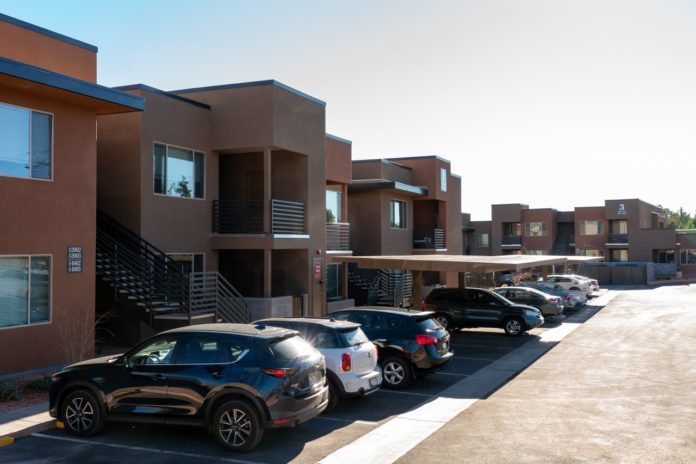As the largest employing industry in the Sedona area, resorts have been hit hard when it comes to the lack of available and affordable housing.
In fact, during the recent Sedona Lodging Council meeting, board president Steve Segner asked by a show a hands if anyone is at full staff. Not one hand was raised.
“How do we get people who can afford to move to the Verde Valley,” Segner asked. “We can all offer very good jobs, but if we can’t get them homes, we’re going to be in serious trouble.”
One of the many guest speakers at the meeting to give updates on various topics was Assistant City Manager and Community Development Director Karen Osburn — who will become city manager beginning March 29. Her discussion focused on the ever-increasing housing issue and the housing study that came before the Sedona City Council late last year.
Over the last two years the city has established an affordable housing fund, which currently has more than $2 million. The monies are to be spent for activities that directly support the creation and maintenance of affordable housing in Sedona.
These funds have come from budgeted allocations made by the council as well as housing in lieu fees from developers. The city anticipates putting another $500,000 into the fund this next fiscal year.
Osburn pointed out that the majority of data used for the city’s housing study was collected from 2017 to 2019 and in the short time since then, the outlook is much different.
“The market has changed and is changing so rapidly that there’s no way you can keep up,” Osburn said. “So when you’re looking at data from 2017, 2018 and 2019, the conditions are far worse now.”
In terms of housing, she said construction height and density are challenges facing Sedona, let alone finding available land to build upon. The city is planning to hire its first-ever housing manager to try and come up with some solutions and find potential partnerships.
“When we get inquiries for new development, it is from hoteliers, almost exclusively,” Osburn said. She added that if a zone change is needed for a hotel, and thus community benefits are required, the first request will include a contribution to the housing fund or the construction of workforce housing units.
According to the housing report, nearly 58% of the renters in Sedona are cost-burdened, paying more than 30% of their household income on rent. The lack of affordable units most affects those households earning less than $50,000 per year, including service workers, teachers and critical service employees such as police and firefighters.
The study shows the root of the housing problem is threefold. The first is increasing house prices. At the end of the first quarter of 2019, the median single-family home cost in Sedona was $562,500, more than double the state’s average cost.
Many long-term rentals have since been turned into short-term rentals. This has decreased available affordable housing while driving up the cost of those long-term rentals that remain. Finally, Sedona only has 257 units within what would be considered traditional apartment complexes and only 211 occupied single-family attached units, or townhomes. This accounts for less than 10% of the city’s total housing units, well below the national average of around 30%.
An overview of the housing situation in the study shows the following:
■ Almost 90% of homeowners live in a single-family home. Another 9% live in a mobile home.
■ Renters live in a variety of housing units, including single-family homes [35%], apartments [28%], condos [12%] and mobile homes [9%].
■ The average monthly rent for Sedona employees across the Verde Valley is $1,210. The highest monthly rent is found in Sedona while the lowest rents are in Camp Verde, Clarkdale and Cottonwood.
■ The federal government has established the standard for housing cost burden as those households that spend more than 30% of household income on rent or mortgage payments. For renter households, 56% of Sedona employees are paying more than 30% of their income for housing, including 16% paying more than 50% toward housing. Approximately 19% of homeowners pay more than 30% of income toward housing.
■ About one-third of renters plan on purchasing a home in the next two years and three-quarters prefer owning to renting.
■ Obstacles to homeownership are lack of affordable units, lack of a down payment and not earning enough.
■ 60% who do not live in Sedona would like to live in the city if affordable housing was available. This is an important finding that shows employees would like to live closer to their workplace despite some of the issues they may have with traffic congestion and other tourism-related dislikes.
The study lists several potential solutions: Establishing a community land trust to develop affordable housing; using city-owned land; establishing a rental subsidy project to determine interest from landlords; and a down payment assistance project to determine interest from prospective owners.






















